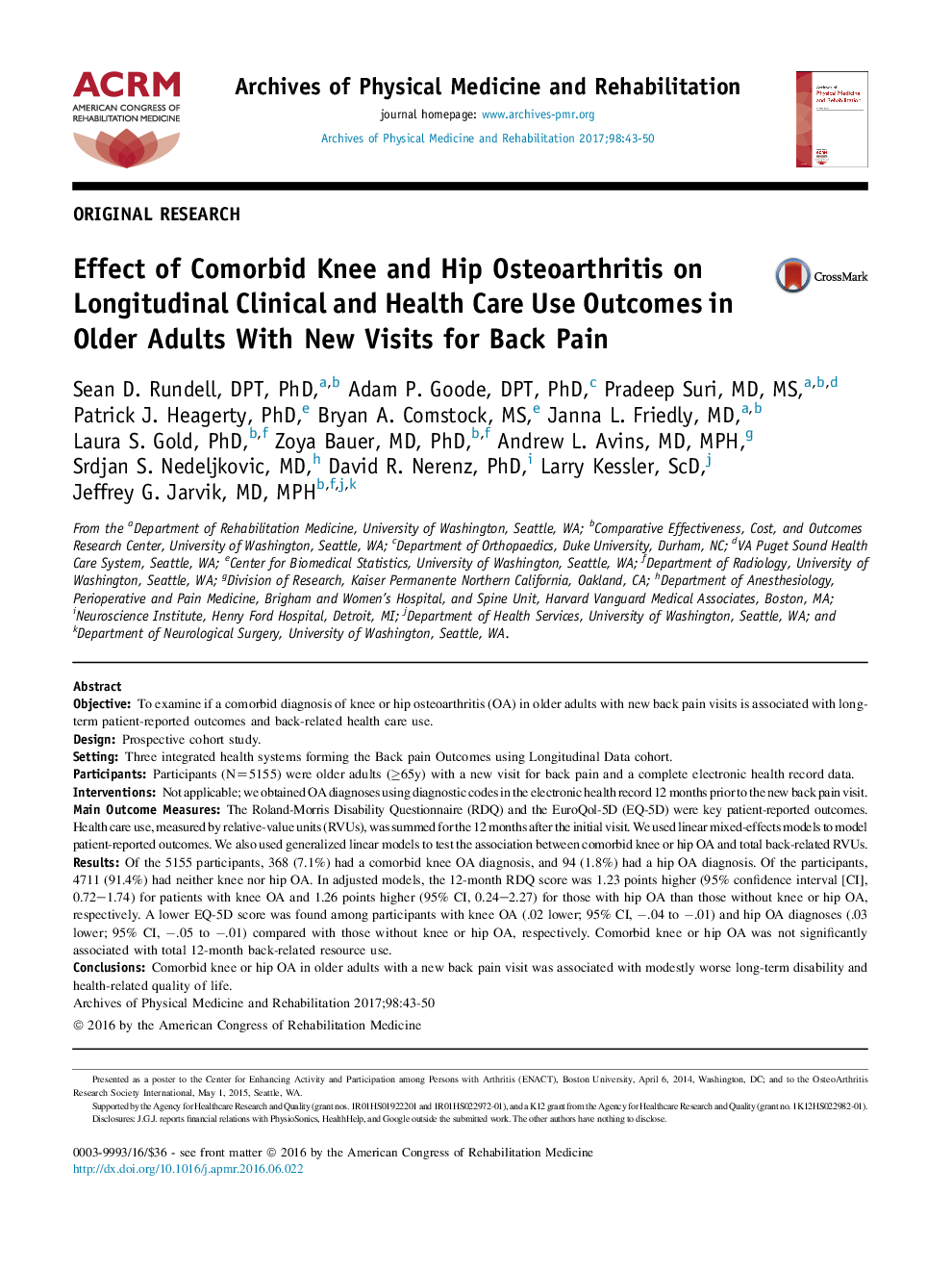| کد مقاله | کد نشریه | سال انتشار | مقاله انگلیسی | نسخه تمام متن |
|---|---|---|---|---|
| 5677580 | 1595658 | 2017 | 8 صفحه PDF | دانلود رایگان |
- Older adults with a new visit to primary care for back pain with comorbid knee or hip osteoarthritis have modestly increased back-related disability, pain interference with activity, and lower health-related quality of life over 12 months.
- Improvement in back-related disability was less among older adults with knee osteoarthritis, therefore influencing the clinical course of back pain in this subgroup.
- There was no difference in total back-related health care use, but the utilization of specific categories of use (physical therapy and spinal injections) was more common among older adults with comorbid knee osteoarthritis.
- These findings suggest rehabilitation providers may need to consider tailoring treatment approaches for older adults with back pain who also have knee or hip osteoarthritis because comorbid osteoarthritis was associated with worse outcomes.
ObjectiveTo examine if a comorbid diagnosis of knee or hip osteoarthritis (OA) in older adults with new back pain visits is associated with long-term patient-reported outcomes and back-related health care use.DesignProspective cohort study.SettingThree integrated health systems forming the Back pain Outcomes using Longitudinal Data cohort.ParticipantsParticipants (N=5155) were older adults (â¥65y) with a new visit for back pain and a complete electronic health record data.InterventionsNot applicable; we obtained OA diagnoses using diagnostic codes in the electronic health record 12 months prior to the new back pain visit.Main Outcome MeasuresThe Roland-Morris Disability Questionnaire (RDQ) and the EuroQol-5D (EQ-5D) were key patient-reported outcomes. Health care use, measured by relative-value units (RVUs), was summed for the 12 months after the initial visit. We used linear mixed-effects models to model patient-reported outcomes. We also used generalized linear models to test the association between comorbid knee or hip OA and total back-related RVUs.ResultsOf the 5155 participants, 368 (7.1%) had a comorbid knee OA diagnosis, and 94 (1.8%) had a hip OA diagnosis. Of the participants, 4711 (91.4%) had neither knee nor hip OA. In adjusted models, the 12-month RDQ score was 1.23 points higher (95% confidence interval [CI], 0.72-1.74) for patients with knee OA and 1.26 points higher (95% CI, 0.24-2.27) for those with hip OA than those without knee or hip OA, respectively. A lower EQ-5D score was found among participants with knee OA (.02 lower; 95% CI, â.04 to â.01) and hip OA diagnoses (.03 lower; 95% CI, â.05 to â.01) compared with those without knee or hip OA, respectively. Comorbid knee or hip OA was not significantly associated with total 12-month back-related resource use.ConclusionsComorbid knee or hip OA in older adults with a new back pain visit was associated with modestly worse long-term disability and health-related quality of life.
Journal: Archives of Physical Medicine and Rehabilitation - Volume 98, Issue 1, January 2017, Pages 43-50
